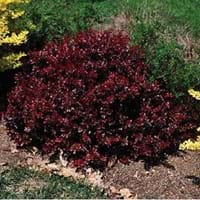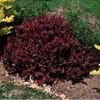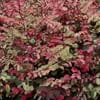Life Span
Perennial
Perennial
Type
Shrub
Cactus or Succulent
Origin
China
South America, Brazil
Types
European Barberry, Japanese Barberry,
not available
Number of Varieties
Not Available
Habitat
Hillside, Woods
Rocky areas, rocky outcrops, Sandy areas
USDA Hardiness Zone
Not Available
10-15
AHS Heat Zone
-9999
12-10
Sunset Zone
Not Available
H2, 13, 21, 22, 23, 24
Habit
Oval or Rounded
Upright/Erect
Flower Color
Yellow
White
Flower Color Modifier
Not Available
Not Available
Fruit Color
Red
Red, Violet
Leaf Color in Spring
Green, Dark Green
Not Available
Leaf Color in Summer
Dark Green
Not Available
Leaf Color in Fall
Dark Green
Not Available
Leaf Color in Winter
Dark Green
Not Available
Leaf Shape
Oval
Succulent
Plant Season
Spring, Summer, Fall, Winter
Spring, Summer, Fall, Winter
Sunlight
Full Sun, Partial Sun, Partial shade
Full Sun
Type of Soil
Clay, Loam, Sand
Loam, Sand
The pH of Soil
Acidic, Neutral, Alkaline
Acidic, Neutral, Alkaline
Soil Drainage
Well drained
Well drained
Bloom Time
Spring, Late Spring
Early Summer
Tolerances
Drought
Drought
Where to Plant?
Ground
Container, Ground, Pot
How to Plant?
Seedlings, Transplanting
Cuttings, Seedlings, Vegetative
Plant Maintenance
Medium
Medium
Watering Requirements
Requires regular watering
Needs less watering
In Summer
Lots of watering
Regular watering required
In Spring
Moderate
Moderate
In Winter
Average Water
Average Water
Soil pH
Acidic, Neutral, Alkaline
Acidic, Neutral, Alkaline
Soil Type
Clay, Loam, Sand
Loam, Sand
Soil Drainage Capacity
Well drained
Well drained
Sun Exposure
Full Sun, Partial Sun, Partial shade
Full Sun
Pruning
Remove dead leaves, Remove deadheads
Remove damaged leaves, Remove dead branches, Remove dead leaves
Fertilizers
All-Purpose Liquid Fertilizer
All-Purpose Liquid Fertilizer, No fertilizers needed
Pests and Diseases
Verticillium Wilt
Not Available
Plant Tolerance
Drought
Drought
Flower Petal Number
Single
Single
Foliage Texture
Medium
Bold
Foliage Sheen
Glossy
Not Available
Attracts
Not Available
Birds, Fruit Bats, Moths, pollinators
Allergy
Itchiness, Stomach burn
Toxic
Aesthetic Uses
Beautification
along a porch, deck or patio, Beautification, Borders, Landscape Designing, Showy Purposes, small hedge, Used for decorating walls, fences, gates, hedges, etc.
Beauty Benefits
Not Available
Not Available
Environmental Uses
Air purification
Food for birds
Medicinal Uses
Diarrhea, High blood pressure, Menstrual Disorders, Upset stomach, Urinary tract problems
No Medicinal Use
Part of Plant Used
Fruits
Fruits, Whole plant
Other Uses
Used As Food, Used as Ornamental plant, Used for fragrance
Used as Ornamental plant, Used in construction, Used to feed livestock
Used As Indoor Plant
No
Showy
Used As Outdoor Plant
Yes
Yes
Garden Design
Hedges, Screening, Wind Break
Container, Feature Plant, Houseplant, Landscape, Rock Garden, Showy Tree, Wall
Botanical Name
BERBERIS soulieana
CEREUS jamacaru
Common Name
Barberry
mandacaru, cardeiro, Night-blooming Cactus, Pleated Cereus
In Hindi
Burberry
mandacaru
In German
Burberry
Cereus jamacaru
In French
Burberry
Cereus jamacaru
In Spanish
Burberry
Cereus jamacaru
In Greek
Burberry
Mandacaru
In Portuguese
Burberry
Mandacaru
In Polish
kwaśnica
Mandacaru
In Latin
Barberry
Mandacaru
Phylum
Magnoliophyta
Tracheophyta
Class
Magnoliopsida
Magnoliopsida
Order
Ranunculales
Caryophyllales
Family
Berberidaceae
Cactaceae
Clade
Angiosperms, Eudicots
Angiosperms, Core eudicots, Eudicots
Tribe
Not Available
Careeae
Subfamily
Not Available
Cactoideae
Number of Species
Not Available
Season and Care of Barberry and Mandacaru
Season and care of Barberry and Mandacaru is important to know. While considering everything about Barberry and Mandacaru Care, growing season is an essential factor. Barberry season is Spring, Summer, Fall and Winter and Mandacaru season is Spring, Summer, Fall and Winter. The type of soil for Barberry is Clay, Loam, Sand and for Mandacaru is Loam, Sand while the PH of soil for Barberry is Acidic, Neutral, Alkaline and for Mandacaru is Acidic, Neutral, Alkaline.
Barberry and Mandacaru Physical Information
Barberry and Mandacaru physical information is very important for comparison. Barberry height is 120.00 cm and width 120.00 cm whereas Mandacaru height is 760.00 cm and width 300.00 cm. The color specification of Barberry and Mandacaru are as follows:
Barberry flower color: Yellow
Barberry leaf color: Green and Dark Green
Mandacaru flower color: White
- Mandacaru leaf color: Not Available
Care of Barberry and Mandacaru
Care of Barberry and Mandacaru include pruning, fertilizers, watering etc. Barberry pruning is done Remove dead leaves and Remove deadheads and Mandacaru pruning is done Remove damaged leaves, Remove dead branches and Remove dead leaves. In summer Barberry needs Lots of watering and in winter, it needs Average Water. Whereas, in summer Mandacaru needs Regular watering required and in winter, it needs Average Water.





